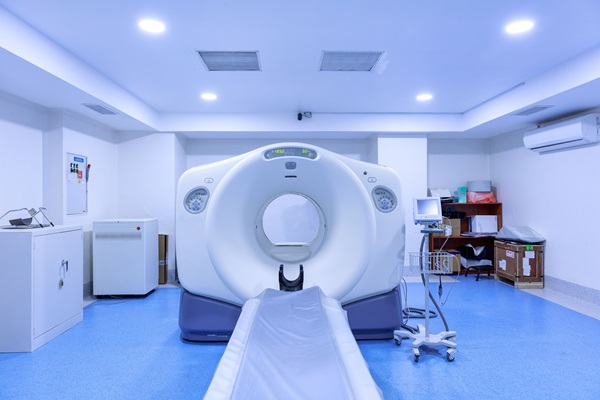X-Rays: A Quick and Safe Imaging Solution

X-rays are popular tools medical professionals use to diagnose a wide range of health conditions quickly and safely. They allow these professionals to see inside the body without invasive procedures, making them invaluable in urgent and primary care settings. Whether identifying fractures, monitoring chronic conditions, or detecting abnormalities, X-rays are critical in ensuring timely and accurate diagnoses.
What are X-rays?
According to the National Institute of Biomedical Imaging and Bioengineering, X-rays are a form of electromagnetic radiation used to create images of the inside of the body. While similar to visible light, X-rays have higher energy that can pass through almost anything, including the human body. When this energy passes through the body, they are absorbed in varying degrees depending on the material density it encounters. For example, bones absorb more X-rays than soft tissues, causing them to appear white on an X-ray image, while muscles and organs appear in shades of gray. This contrast helps healthcare providers identify many types of issues, such as fractures, infections, or abnormal growths.
Why are X-rays used?
Healthcare providers rely on X-rays for various diagnostic purposes. In urgent care settings, X-rays are particularly valuable for assessing injuries, such as broken bones, joint dislocations, or even dental issues. In primary care settings, providers may use them to monitor chronic conditions, such as arthritis or lung disease, and to detect signs of infections, like pneumonia.
When are X-rays necessary?
Healthcare providers recommend X-rays when there is a need to evaluate internal structures that they cannot assess through a physical examination alone. Common scenarios include:
- Identifying fractures, dislocations, or other bone injuries
- Detecting lung conditions such as pneumonia or bronchitis
- Monitoring the progression of chronic conditions like arthritis
- Evaluating dental issues, including cavities and impacted teeth
- Guiding certain medical procedures, such as the placement of catheters or injections
Note that this list is not exhaustive, and there can be many reasons a healthcare provider recommends an X-ray. However, patients are always informed before an X-ray is performed. To help ensure this approach is viable and safe, providers ask the patient a series of questions, the main ones relating to pregnancy and metal implants within the body.
What to expect during an X-ray?
The X-ray process is simple and non-invasive, typically taking only a few minutes. The medical team member, likely a radiologic technologist, will ask patients to stand, sit, or lie down, depending on the area being examined. The team member positions the X-ray machine and may ask the patient to hold still or hold their breath for a few seconds to ensure clear images.
Depending on the machine, the team member will leave the room to operate it. Remember that while it is safe for the patient to undergo the process, the team member likely performs several X-ray procedures daily, multiple days a week. Therefore, they have more radiation exposure than patients who stop by for a visit. Nevertheless, once the machine captures clear images, the acting healthcare provider will review them and discuss their findings and next steps with the patient.
Are X-rays safe?
Even though X-rays have been around for quite some time, some misconceptions exist regarding their safety. While they involve exposure to a small amount of radiation, the levels are generally considered safe for most individuals. Healthcare providers take precautions to minimize exposure, such as protective lead aprons and limiting the number of X-rays performed.
Modern X-ray machines use the lowest possible dose of radiation while producing high-quality images. The benefits of obtaining accurate diagnostic information far outweigh the minimal risks associated with radiation exposure. Providers carefully monitor cumulative radiation levels for those requiring frequent imaging, such as those with chronic conditions, to ensure long-term safety.
Advances in X-ray technology
Recent advancements in X-ray technology have further enhanced their diagnostic capabilities. Digital X-rays, for example, offer superior image quality and can be stored and shared electronically. This allows for quicker communication between healthcare providers and specialists, leading to more efficient care. Additionally, as mentioned, newer machines are designed to minimize radiation exposure while maintaining image clarity. Innovations such as 3D X-ray imaging and portable X-ray devices are expanding how this technology can be used, providing greater convenience and accessibility for patients.
Take a peak inside the problem area
X-rays are a quick, safe, and effective imaging solution many will encounter when visiting urgent or primary care. If you are having health trouble, whether or not you understand the source, contact Texas Urgent Care & Imaging Center. We offer X-rays and other diagnostic tools to identify the root cause and curate a treatment plan.
Request an appointment here: https://tx-urgentcare.com or call Texas Urgent Care & Imaging Center at (832) 941-1894 for an appointment in our New Caney office.
Check out what others are saying about our services on Yelp: X-Rays in New Caney, TX.
Recent Posts
A CT scan, or computed tomography scan, is a diagnostic tool that provides detailed images of the body’s internal structures. This non-invasive procedure helps medical professionals diagnose and monitor various conditions, from injuries to chronic illnesses. Knowing what to expect during a CT scan can ease concerns and prepare patients for a smooth experience.A CT…
If you work in public transportation, you may need to have a DOT drug screening. The Department of Transportation (DOT) regulates this test and requires it for you. You might be wondering what this test is like. Keep reading to learn more.Congress passed the Omnibus Transportation Employee Testing Act in 1991. Congress knew that the…
Walk-in clinic provide convenient, accessible health care for non-emergency medical needs, making it an ideal choice when immediate attention is necessary. Understanding when to visit a clinic can help patients save time, avoid unnecessary trips to the emergency room, and receive quality care for their health concerns. These clinics handle various issues, offering fast, professional…
Walk-in clinics provide minor illness treatment for patients seeking quick and effective healthcare to address their symptoms. These accessible facilities address non-emergency medical concerns without the need to wait days for the next available appointment. The following guide will review some of the most common minor illness treatments offered at walk-in clinics.Respiratory tract infections (RTIs)…


